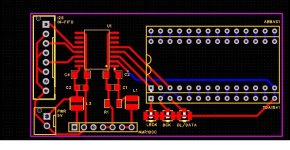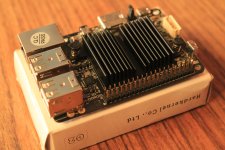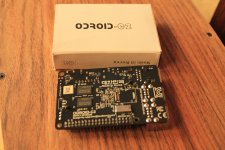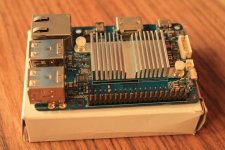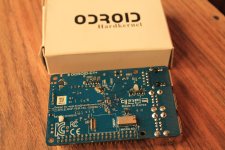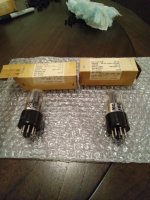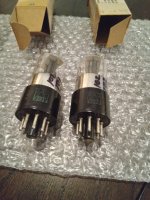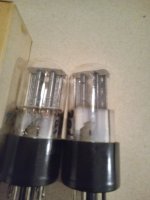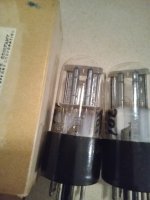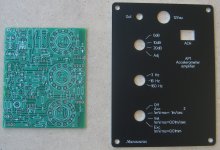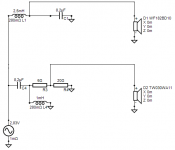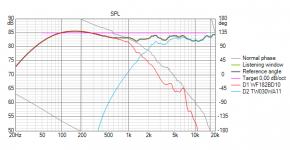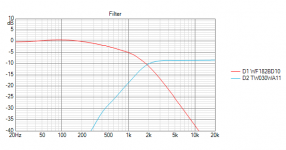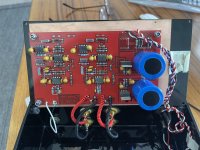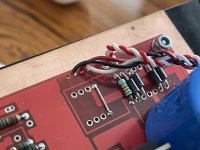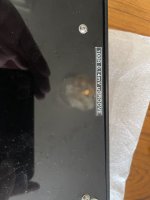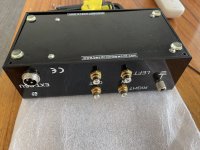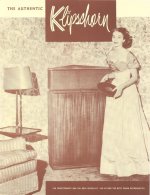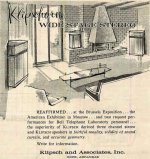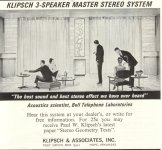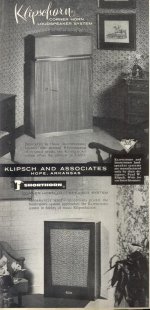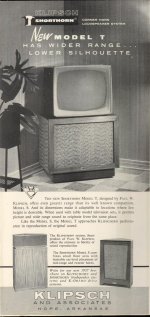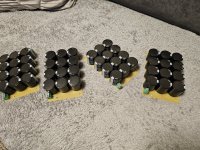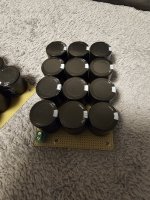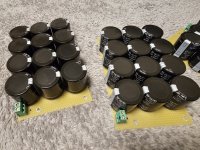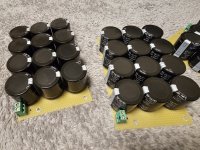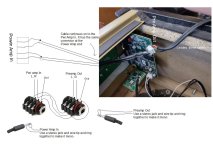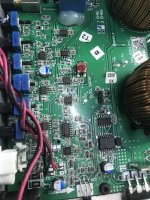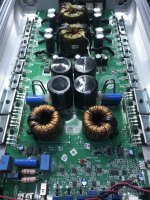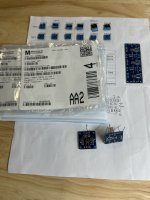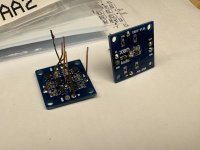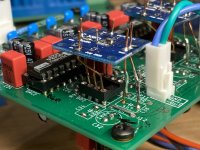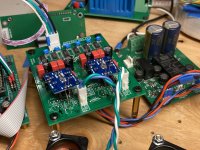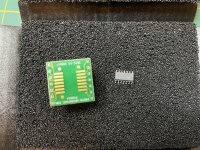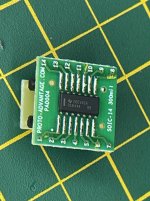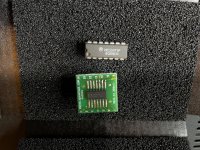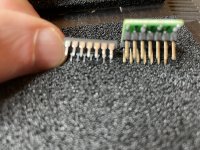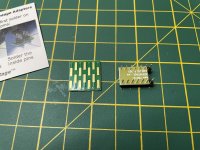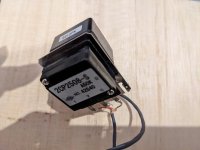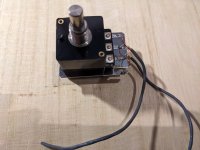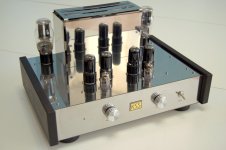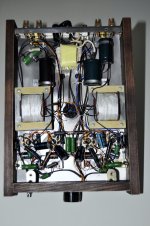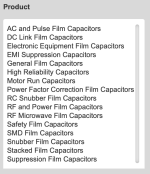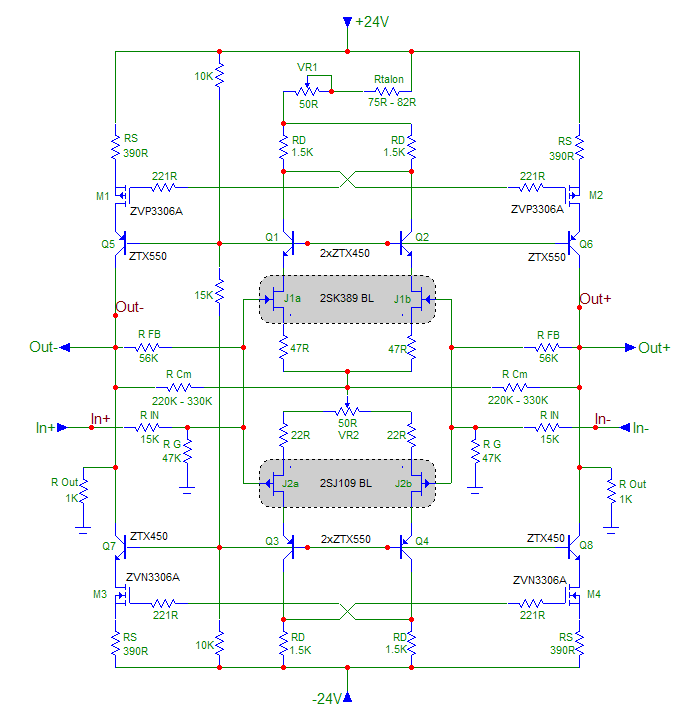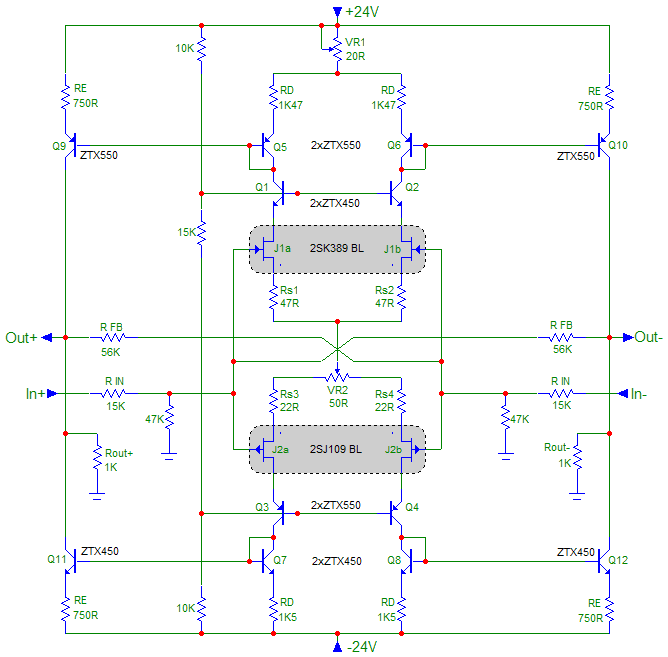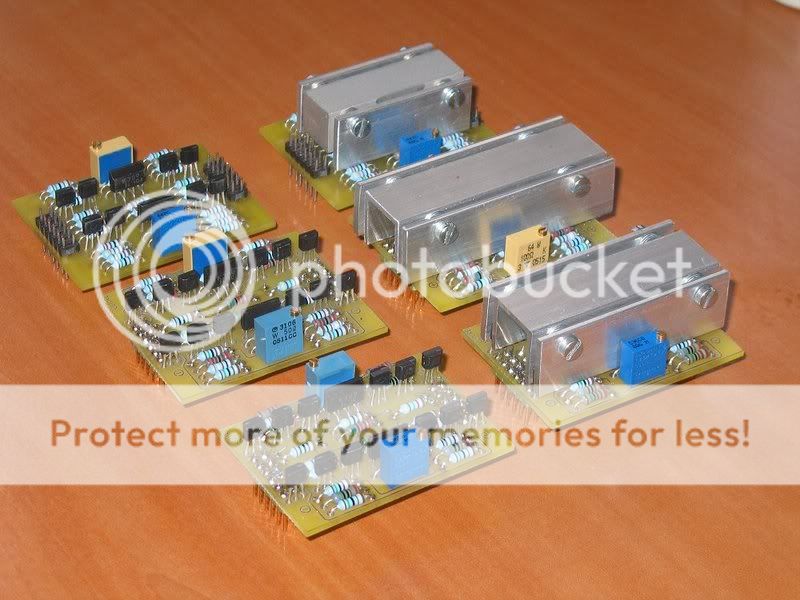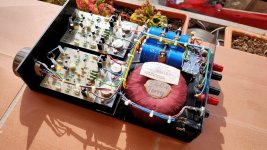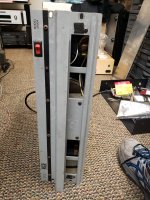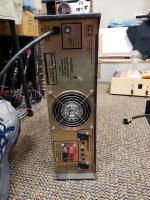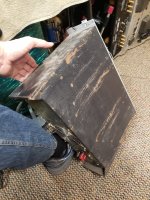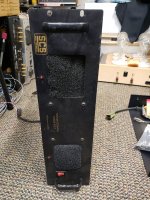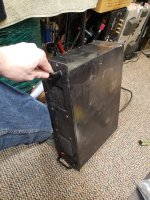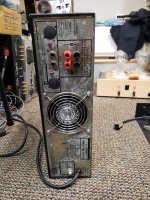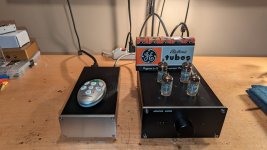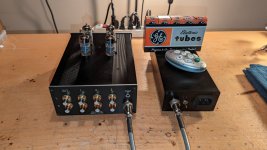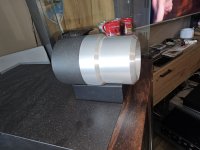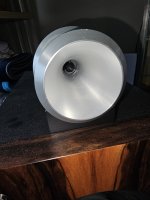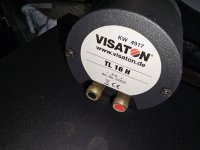Hi,
Some time ago, I prototyped a modified version of Acaudio's UGS module, and showed it
here as I was very pleased with the sound
😀 .
But I encountered some problems when using it as an Unbalanced to Balanced converter :
the two outputs were of opposite phase, but the peak to peak amplitude was slightly different from one output to the other...
I investigated a bit, and it appeared that this phenomenon was due to the common-mode feedback resistors (R5 & R6 on the linked schematic),
whose value was too low.
So I moved from 4K75 to the hundreds of KOhms (namely 180K) for these resistors, and it cured the problem.
But unfortunately, this modification had a negative impact on the absolute output offset stability,
which began to wander too much for my taste.
This stability is mostly related to the thermal stability of the output mosfets, and their dissipation being quite high,
I began decreasing their bias current (increasing their source resistors).
The offset tamed down, but the sound was worse... Some veil on the highs.
So I searched for a solution allowing both to keep the high bias and to lower the mosfet's dissipation.
It ended up by using a second cascode on the output stage :
A bit more complicated than the first version, but it met my needs.
The offset was down to what I was used to (+/-1mV), as for the sound. It was even better,
with a greater extent to th top of the spectrum, some added speed. I was a lucky man
😀
Then I stumbled upon one of Nelson's crumbs on the UGS, and I immediately wanted to try it
😉
It's based on the use of current mirrors for the "output stage" (the level shifters), instead of mosfets.
Being born to the world of High End using mostly mosfets (thanks Nelson),
it was somewhat conceptually hard for me to move to BJTs, but I made the step,
and here's what I tested :
To go straight to the conclusion, I must confess that (for me) this version is by (a lot of) far superior to the mosfet version, cascode or not.
Ultimate speed, added life to the music, truth everywhere, instrument location, dynamics, widening...
Wowwwww... What a beast !
And from the technical point of view, it's a pleasure. I love the elegant simplicity of the design.
And no more need of common-mode feedback resistors... Provided that the transitors are thermally coupled,
it sticks to 0V, typically 0.1 to 0.2mV, both relative and absolute, without any parts matching.
I've still got some test to perform, e.g. to see if a lower current gain of the mirrors has effect on the sound.
This would allow to dicrease the dissipation, and may be to avoid a thermal coupling.
Just for the pleasure, the whole family
😉
From back to front : The original version, cascoded mosfets, and current mirrors.
And at last, a very warm thank to Nelson for allowing us to have a taste of heaven. Many many thanks
😎 😎 😎